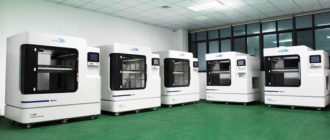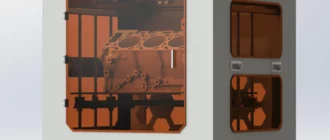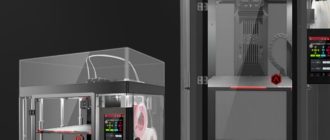Massivit has specialized in large-scale additive manufacturing for many years. Their 3D printers are used to produce large-scale objects for marketing and entertainment purposes. But the company’s technology is capable of more.
Fiber-reinforced plastics (FRP) consist of a plastic base and reinforcing fibers such as glass and carbon fibers. These additives can be adjusted by the length and arrangement of the fibers, improving the properties of the plastic backing, increasing strength, durability and stability. FRP composites are lightweight and have relatively low raw material costs, which in many cases makes them more advantageous than metals. Due to all these factors, fiber-reinforced plastics are of interest in many applications, particularly in the automotive, railroad, power, marine and construction industries. Despite these advantages, the introduction of FRP composites has faced a challenge in large part due to the cost and complexity of moldmaking. That is, traditional tooling processes are incredibly labor-intensive and time-consuming, requiring multiple steps before the mold is made, which inevitably leads to higher costs.

The Massivit 10000 offers an alternative for manufacturing molds for large FRP components. The hybrid additive manufacturing system is capable of producing composite molds 80% faster than traditional tooling methods (we’re talking weeks to days) and with much less manual labor (up to 90%). The process is also practical: manufacturers can continue to use many of their current processes, materials to create molds, while using the Massivit 10000 to improve and optimize existing workflows.

The Massivit 10000 relies on a combination of processes: the company’s patented Gel Dispensing Technology (GDP) and Cast-In-Motion (CIM) technology. The GDP jet head, with built-in UV emitters for instant material curing, applies photopolymer gel to make the mold template. Then, it is filled with curing engineering resins using a CIM injection molding head. Today, the company uses epoxy as its casting material, but it plans to expand its list of casting materials in the near future.

This dual approach results in a temporary shell with a resin model inside. The printed model is then immersed in water to remove the water-soluble outer layers, after which the model is sent to an oven for curing. The mold, which can then be sanded and polished as needed, is then ready to be used to make composite products.
Measuring up to 1.2×1.5×1.65 meters, the Massivit 10000 is suitable for a wide range of applications, including the production of large molds for racing car seats and catamaran underwater wings, as well as small molds for protective antenna housings and much more. The Massivit 10000 reduces tooling costs by up to 50% by radically optimizing the production process.

In addition to cost and time savings, Massivit 3D’s Cast-In-Motion process is more environmentally friendly than traditional composite tooling production, mainly because it minimizes material waste in several steps. At a basic level, hybrid 3D printing and casting technology eliminates the need for skilled personnel directly printing the mold, which significantly reduces material consumption.
As mentioned, FRP composites are widely used in most industrial sectors: they provide many of the useful properties of metal without the extra weight and extra cost of raw materials. In the automotive industry, for example, FRP composites are widely used because of their golden strength-to-weight ratio. Today, they are used to produce car body parts and siding, as well as pedals and seat backs, among other parts. In this sector, one of the key advantages of FRP composites is that they help improve fuel efficiency by minimizing vehicle weight.
In the aerospace industry, the materials are attractive because of their resistance and durability even under harsh conditions. In construction, FRP composites are used to maintain infrastructure to increase the strength and bearing capacity of existing structures, as well as to make prefabricated houses, road structures, pipeline fittings and much more. FRP composites are also widely used in the marine industry, where they can withstand harsh environmental conditions due to their good corrosion resistance.







